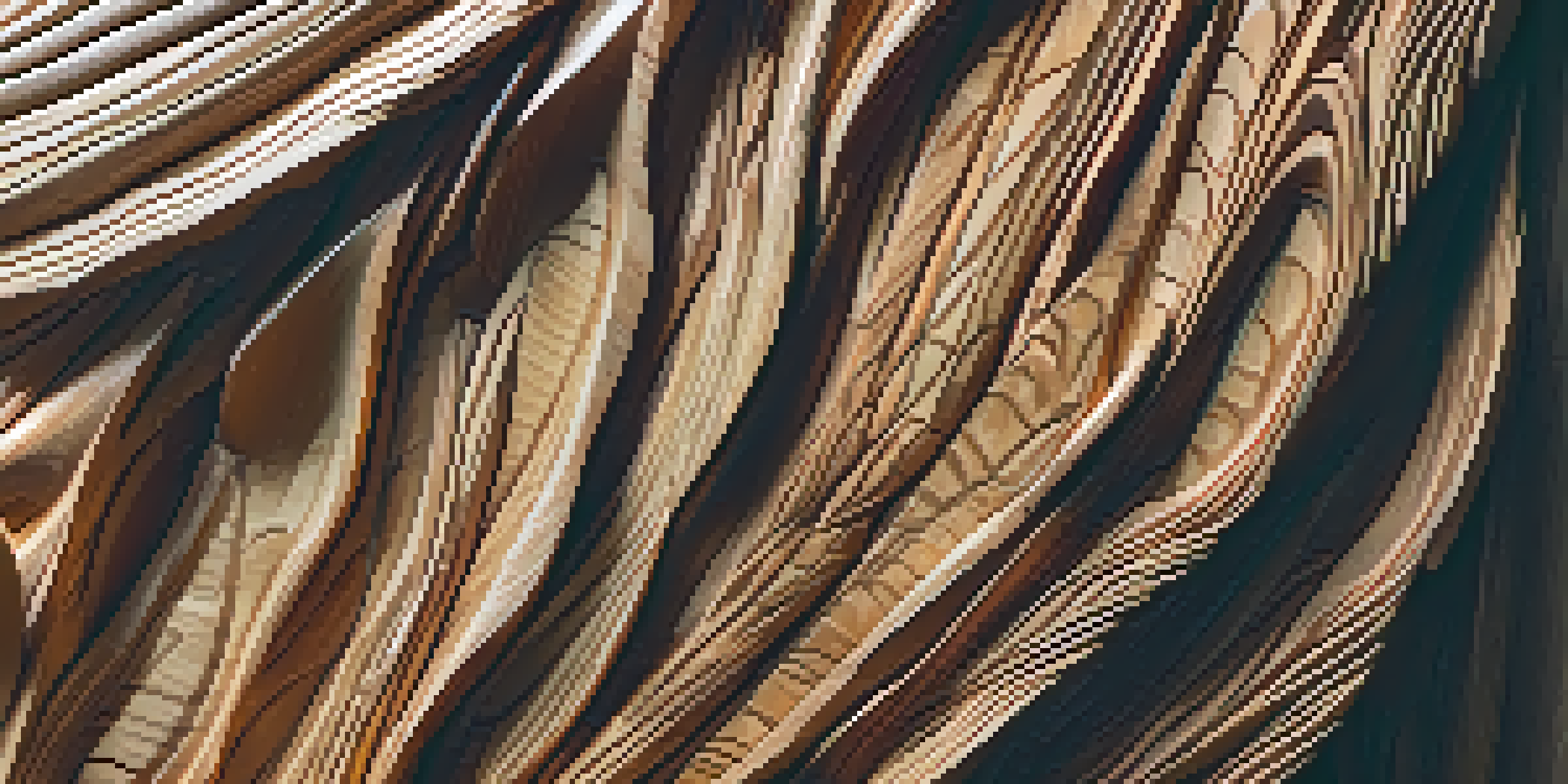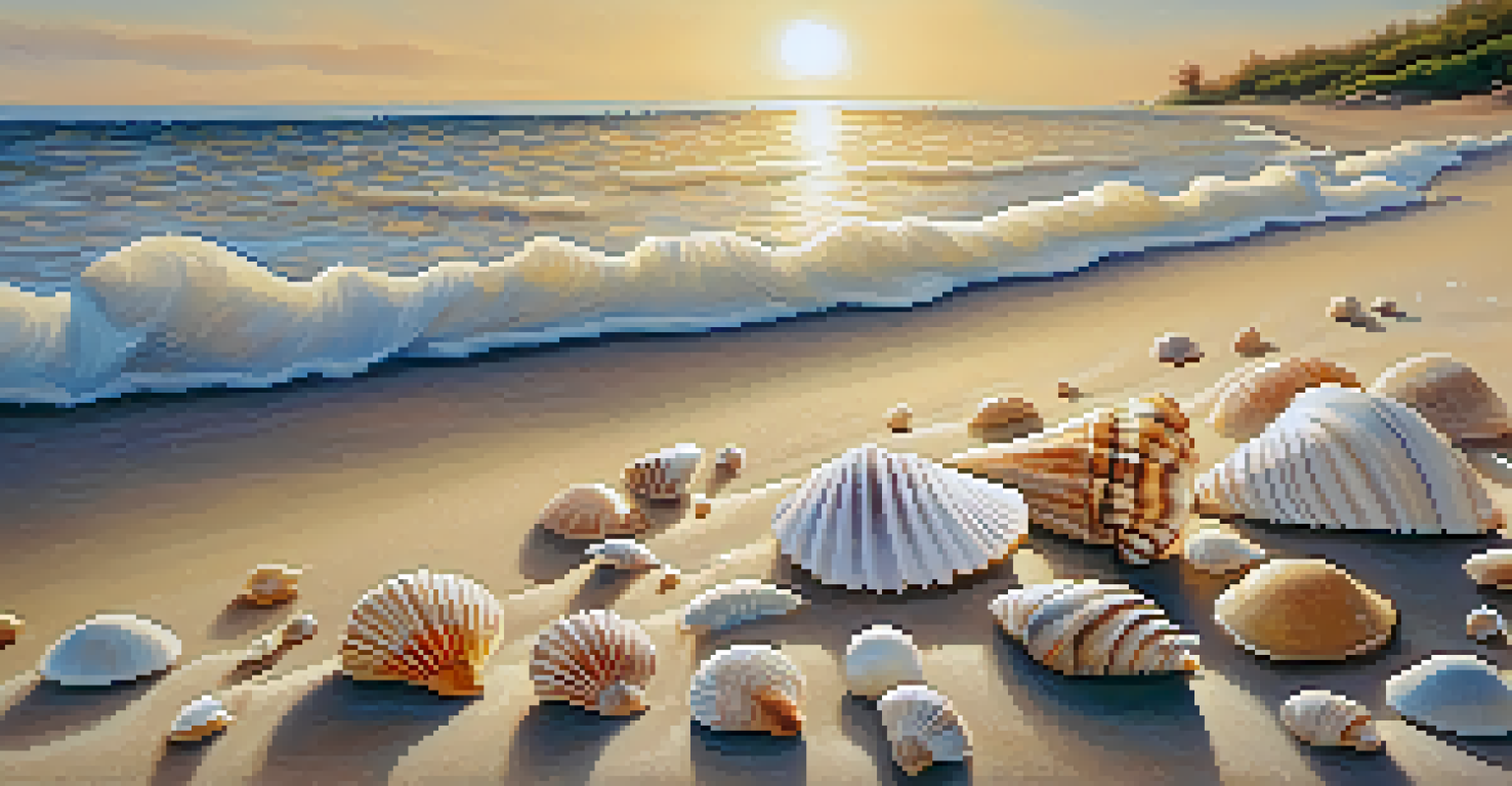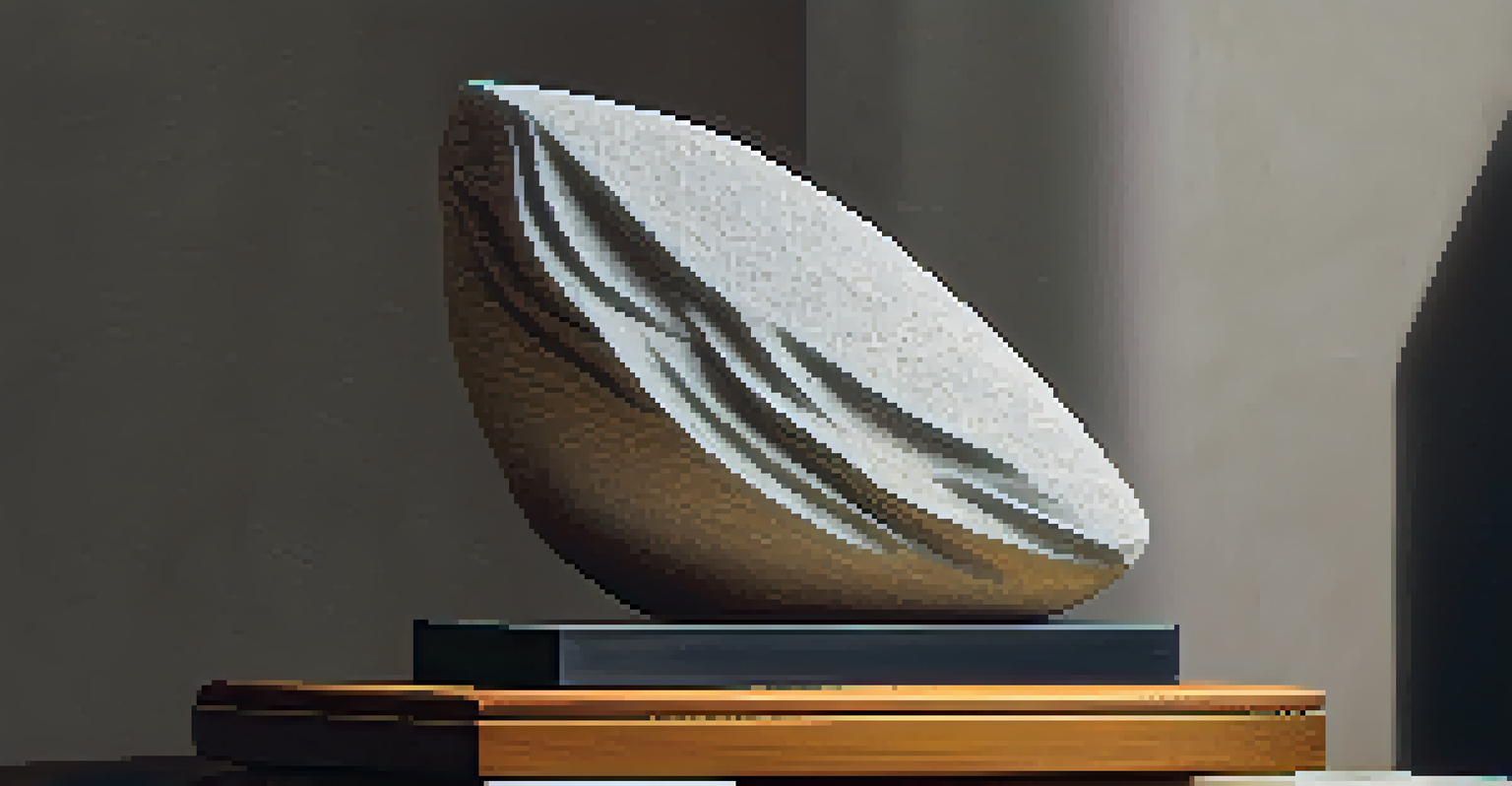Textures from Nature: Carving Techniques for Realism

Understanding the Importance of Natural Textures
Natural textures play a crucial role in making sculptures and carvings feel lifelike. By observing the way light interacts with surfaces in nature, artists can create depth and realism in their work. Think of how a rough tree bark or a smooth stone can evoke different feelings and connections.
Art is not freedom from discipline, but disciplined freedom.
When you incorporate these textures into your carvings, you invite viewers to engage more deeply with your art. It's like telling a story; the details help convey the mood and theme of your piece. The more authentic your textures are, the more relatable your work becomes.
Moreover, understanding these textures can significantly enhance your skills as a carver. It’s about more than just mimicking what you see; it's about interpreting and conveying the essence of nature in your work.
Choosing the Right Tools for Texturing
Having the right tools is half the battle when it comes to achieving realistic textures in your carvings. Various chisels, knives, and even specialized texturing tools can make a world of difference. Each tool has its own unique application, much like how a painter selects different brushes for various effects.

For instance, a flat chisel can create broad, flat surfaces, while a V-tool is excellent for carving fine details and lines. Investing in a variety of tools will give you the flexibility to explore different textures, from the ruggedness of bark to the smoothness of leaves.
Natural Textures Enhance Realism
Incorporating natural textures into your carvings invites viewers to connect more deeply with the artwork.
Don't forget to experiment with unconventional tools too. Sometimes, everyday objects can create fascinating textures that you never thought possible. Being creative with your tools can lead to unexpected and delightful results!
Exploring Different Natural Textures
Nature offers an endless array of textures to draw inspiration from. From the soft, feathery look of moss to the intricate patterns on a seashell, each texture tells its own story. When you explore these elements, you can find ways to incorporate them into your carving projects.
Every artist dips his brush in his own soul, and paints his own nature into his pictures.
Consider taking a walk in your local park or beach to observe textures first-hand. Bringing a sketchbook along can help you jot down notes or make quick drawings of interesting surfaces. This practice not only sharpens your observation skills but also fuels your creativity.
Additionally, photographing natural textures can serve as a valuable reference for future projects. You’ll have a library of ideas at your fingertips, helping you to recreate the beauty of nature in your carvings.
Techniques for Carving Wood Textures
Carving wood can be particularly rewarding, as it allows for a range of textures from smooth to deeply grooved. One effective technique is to use the grain of the wood to your advantage, enhancing its natural beauty. For example, you can create the illusion of bark by following the wood's existing lines and knots.
Another popular method is the use of stop cuts, which can help define areas of your carving, creating crisp edges and distinct textures. It's like outlining a drawing before filling it in; these cuts provide structure to your work.
Choosing Tools Shapes Your Art
Selecting the right tools is essential for achieving realistic textures, allowing for greater creativity and flexibility in your work.
Remember to practice patience when carving. Time spent on the details will yield a more polished and realistic finish, allowing viewers to appreciate the intricate textures you've created.
Integrating Stone Textures into Your Work
Stone carving presents its own set of challenges and opportunities for texture creation. The hardness of the material means you need to approach your work with care and precision. Using rasps and files can help you achieve fine textures, such as the smoothness of a polished surface or the roughness of a chipped edge.
One effective technique is to create contrasting textures on the same piece. For instance, you can polish certain areas to a high shine while leaving others rough and raw. This contrast not only adds visual interest but also draws attention to the different aspects of your work.
Additionally, studying the natural formations of stone can inspire your carving techniques. Many stones have unique patterns that, when replicated, can elevate your art to another level.
Adding Finishing Touches for Realism
Once you’ve carved your piece, the finishing touches are crucial for bringing your textures to life. This can involve sanding, polishing, or even applying stains or paints to enhance the natural beauty of your work. Think of it like the final brush strokes that complete a painting; these details can make all the difference.
Using natural oils or wax can also provide a subtle sheen, highlighting the textures without overpowering them. The goal is to maintain the integrity of the textures you've created while enhancing them subtly.
Experimentation Fuels Artistic Growth
Embracing experimentation and learning from others can lead to exciting discoveries and elevate your carving skills.
Finally, don’t forget about lighting when displaying your work. Proper lighting can accentuate the textures, casting shadows and highlights that bring your carving to life in a whole new way.
Embracing Experimentation and Creativity
As with any art form, experimentation is key to developing your skills and style. Don’t be afraid to try new textures or techniques; some of the best discoveries happen outside of your comfort zone. Whether it’s mixing mediums or combining different textures, creativity can lead to unexpected and exciting results.
Consider taking workshops or joining online communities where you can share your experiences and learn from others. Engaging with fellow artists can provide fresh perspectives and techniques that you might not have considered.

Remember, the journey of mastering textures is just as important as the finished product. Embrace the learning process, and let your passion for carving guide you to new heights.